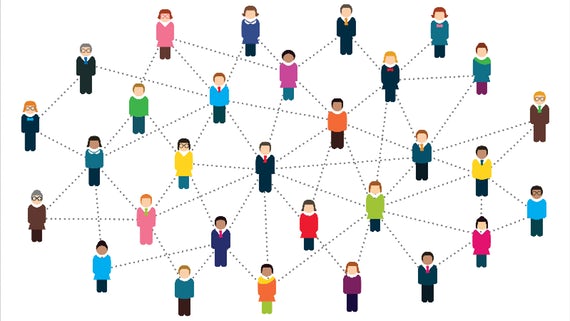Ecosystem Members Co-creating Designs
Barry Camson
To read Barry Camson’s full blog – click here
I have been expressing the idea in previous posts that in an ecosystem, knowledge and skills are continually exchanged by members of the ecosystem in the process of ongoing value co-creation. In this article, I will apply this to designing in ecosystems.
Lately, I have read some academic articles that talk about extending this process of value co-creation to participative, redesign efforts in an ecosystem. As Lucy Kimbell from the University of Oxford states, design can be a distributed social effort in which the role of a central designer is not privileged. In this view, design is carried out by professional designers and by end-users and others. (Kimbell, 2011, 2012).
While I appreciate the contribution that these articles are making especially in providing a helpful conceptual underpinning as well as provoking thought, they are referring to a phenomenon that we organization consultants have appreciated for some time.
Participative design can occur throughout an ecosystem and this is based on the exchange of value-adding knowledge and skills with one another. Whether using socio-technical systems methodology, large-scale meeting processes, Design Thinking and/or Appreciative Inquiry, we have been involved in doing this in large systems. We have continued to address extending the horizons further which is what I see as the intention behind Kimbell’s articles.
We have for a long time acknowledged that how the system acts in the act of redesigning becomes a foundation for what ends up being set out in the design for the future. Or, as Kimbell cites in one of her articles, “Structures are enacted by users in practice.” I see Kimbell’s comment as asking us to give special credence to the processes of emergence.
We can take things a step further and say that the conversations that people are having in exchanging skills and knowledge in the process of design constitute efforts at meaning-making in the system. These new meanings represent co-created value.
I am reviewing one of David Cooperrider’s articles for a class which I am teaching (Cooperrider, Barrett, Srivasta). This is an article that deals with his early efforts at the Cleveland Clinic in utilizing what we now call Appreciative Inquiry. One of the outgrowths of ongoing dialogue among doctors was an increased awareness of the egalitarian ideas and practices currently in existence and desired in the future. This represented a system-wide discourse.
Something else to consider is how the conversations about design in a system through which knowledge and skills are exchanged aggregate into a narrative of both how things are currently (what is privileged so as to be able to arise as a narrative) and what has yet to be developed into a narrative (what is not yet privileged.)
Where I am going with all of this is the idea and power of conversations in ecosystems – to clarify, to create awareness and to transform. This is the idea of Dialogue.
If how we “do ourselves” as part of the process of design in a system becomes built into a future design, then the conversations that we hold as forms of exchange and the people with whom we have these conversations become important as do the narratives or stories that result.
One can, thus, see the process of design as creating a Discourse of the Future. In the case of the Cleveland Clinic, the discourse reflected the community of doctors as an egalitarian enterprise where everyone takes the time to set out their ideas and listen to the ideas of others and is open to what develops in terms of decisions and future actions.
In the case of building a sustainable organization or community, it may be a growing narrative of how we are working together to take action, utilizing a quadruple bottom line, making sacrifices and being innovative so as to preserve the planet for future generations. Or, it may be a more micro version of this.
In this sustainability example, there are practices that are part of this conversation and places where conversations take place and experiences that are had just as there were at the Cleveland Clinic. For example, there are ways of respectfully listening to and interacting with one another even across different perspectives. There are ways of making decisions. There are norms for action. There are the actions themselves. All of these get baked or reified into the fabric of the ecosystem and into its institutional structure. They in turn get reflected back into its practices.
A Practical Action
All of the foregoing leads to the question of what can be done to engender the specified dynamics in an ecosystem as part of a “designing” process.
While there may be numerous options for action, we can return to the Cleveland Clinic, Appreciative Inquiry example in suggesting a question as the basis for interviews within the ecosystem and as a basis for creating generative conversations within the ecosystem.
In using the Sustainability example, one possible area of inquiry could be:
Please describe a moment in your time in this community or in your career when you felt most alive, most effective and most engaged in your active support of sustainability initiatives? What was that experience like? What did that mean to you? Tell a story about this.
What actions were you taking that produced this result, e.g. sharing your skills and knowledge? With whom?
What actions were others taking, e.g. sharing their skills and knowledge?
What support were you being provided?
What resulting value did you help to create?
What helped this be a successful experience?
I hope that all of this helps to illuminate possible actions for designing in ecosystems. Please feel free to comment.



